Jade plants or Crassula ovata if you know them by their botanical name, are beautiful tropical plants that are an easy to grow plant. If you’re new to jade plants or just want a few more tips on growing your plant, you’re in the right place!
This article is going to give an overview of how to care for a jade plant and hopefully give you some insight into what it takes to be a good jade plant parent! Let’s get started!
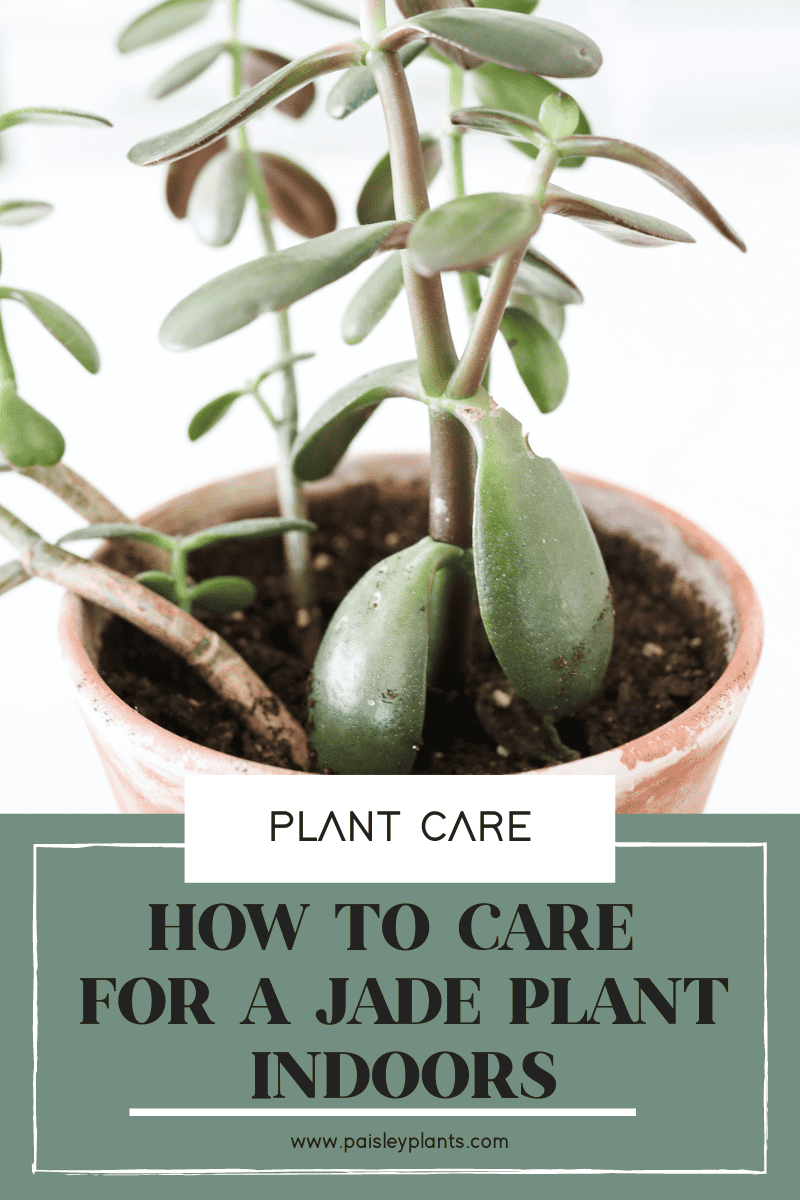
Table of Contents
Background/History
Jade plants originated in South Africa, but have been cultivated as a houseplant in both Europe and America for over one hundred years. They are tough and easy to grow succulent plants. Some have been known to grow as tall as six feet!
They typically have woody stems as they mature with round or oval-shaped leaves. They hold water in their fleshy leaves!

Common Names
There are many names for a Jade plant, some of which are the lucky plant, the money plant or the money tree. Some people believe these plants bring good luck and will gift them to others to bring good luck into their home.
Varieties
The most common and recognizable type of jade plant is the Crassula ovata, which is also known as the money plant. But, there are over 200 species of plants in the Crassula genus which come in a variety of shapes, sizes and colors. They are fascinating to look at and research, if you take the time!
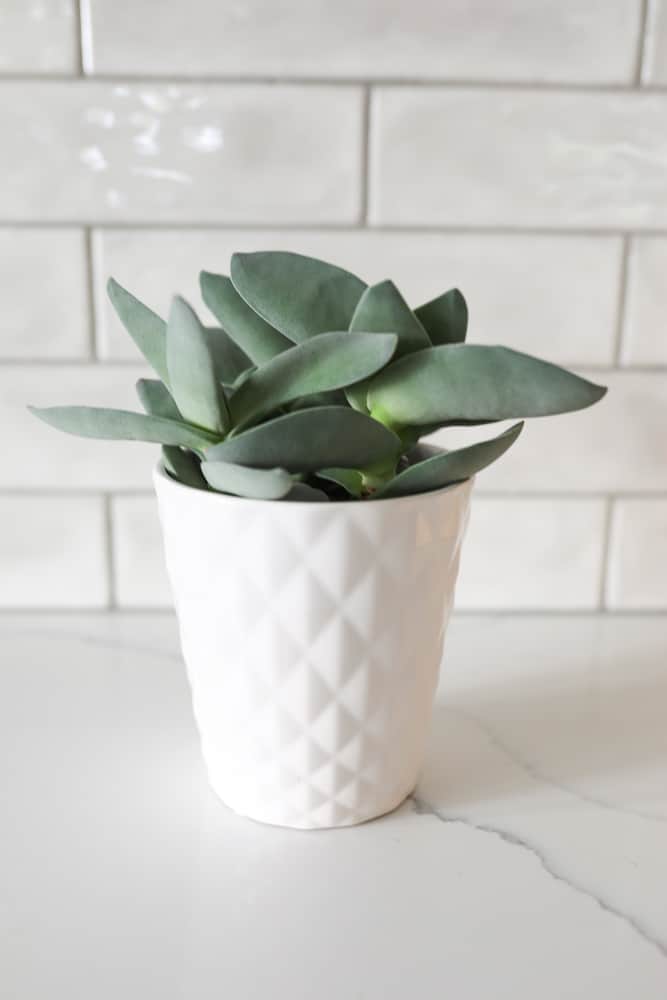
Toxicity
If you are going to have a jade plant in your home, you need to be aware that all parts of a jade plant are considered toxic to both humans and animals. All parts of the jade plant are toxic, including the stems, leaves, and roots.
Jade Plant Care
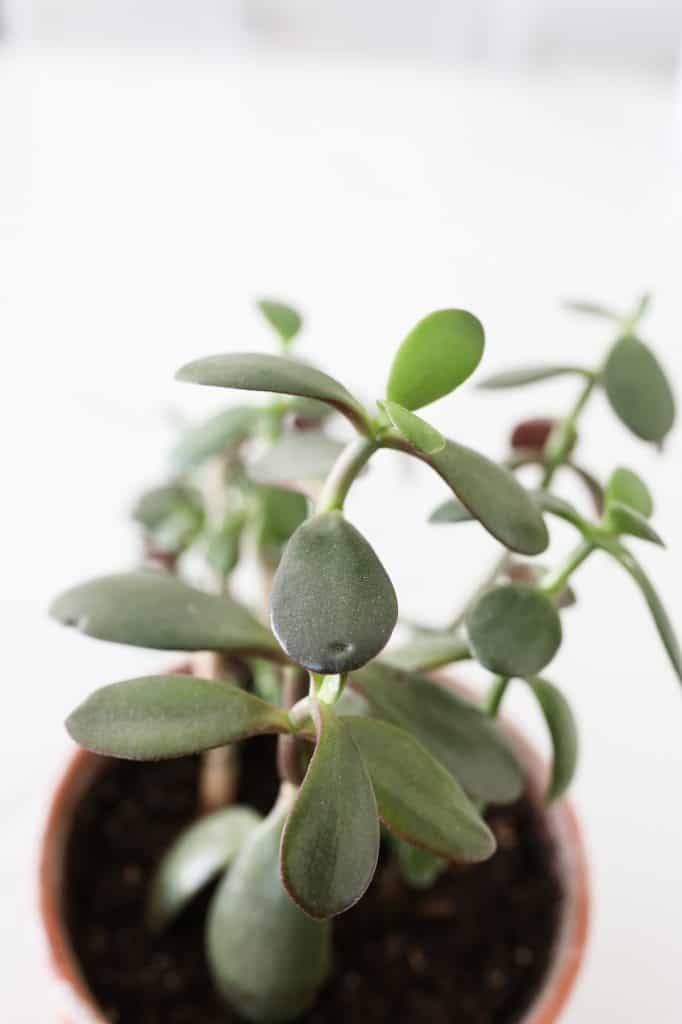
Watering Requirements
One thing you need to remember about your jade plant is that it holds water in its leaves. Therefore, it should never sit in water with constantly moist soil. This can lead to root rot and also kill the plant rapidly! Let the top 1 to 2 inches of the soil dry out between watering again.
If the leaves of your plant begin to turn yellow or droop, this can be the first sign of overwatering. Also, other signs of overwatering can include the leaves and stems becoming soft and squishy.
Be sure the pot your jade plant is in has drainage holes so excess water can drain. The first thing to do if you think you have overwatered your plant, is to stop watering! Let the plant dry out completely.
You will have to watch your plant to ensure it isn’t past being saved, but if it seems to be okay, just start a regular watering schedule ensuring you don’t overwater! In some cases, you may have to repot your plant, but hopefully, you can save it.
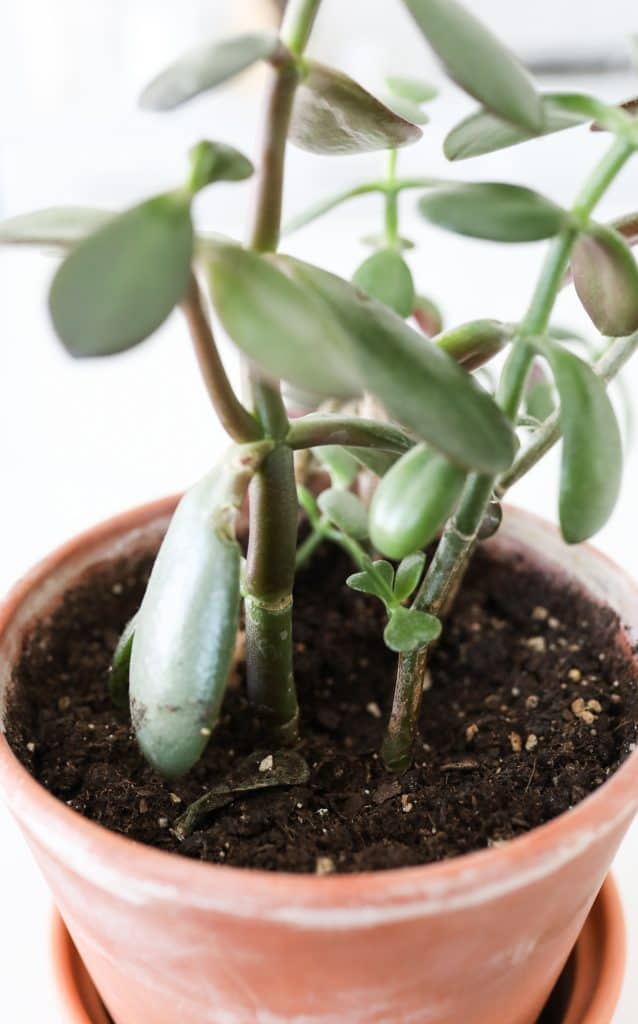
Light Requirements
Your jade plant requires at least six hours of bright, indirect sunlight each day. Even though some mature plants can handle direct bright light, young plants will require a bright space that’s free of direct full sun.
Be sure to rotate your plant often to ensure the plant grows in an even pattern. The leaves will tend to become leggy on one side if you leave the plant with only one side towards the light source. This can make for a lopsided plant!
Soil Requirements
As much as you might like to use regular potting mix for your jade plant, it probably isn’t the best idea. Adequate drainage is vital for your jade plant, as too much moisture can cause wet feet and root rot.
You should use a well-draining soil that is specifically for succulents that has a loose and rocky composition. You can buy this commercially or you can make your own. There are lots of “recipes” for this online, if you are so inclined to make your own.
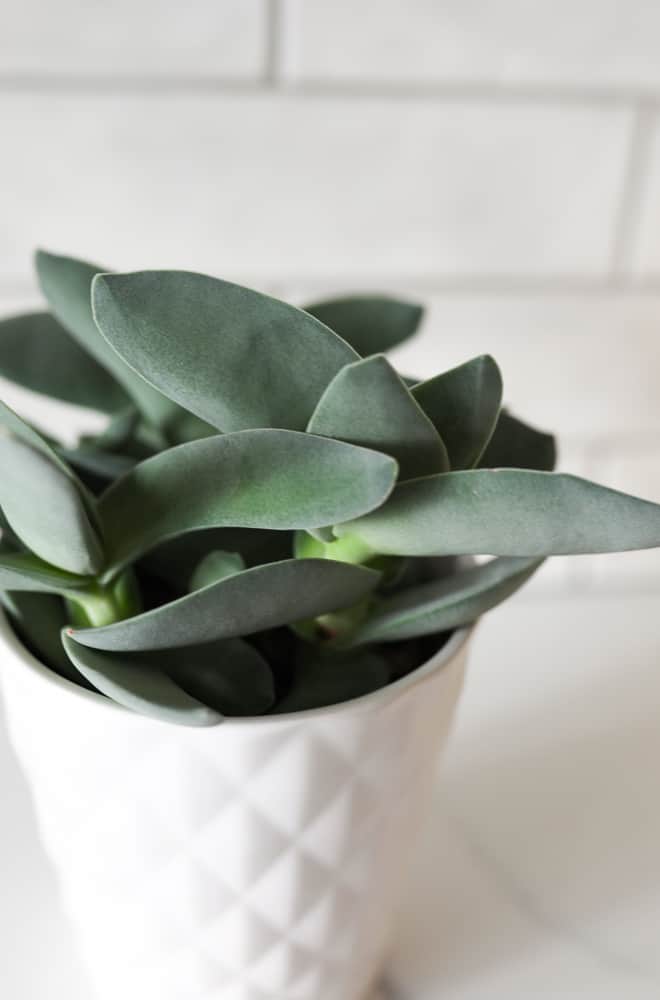
Fertilizing Requirements
Because jade plants are slow growing, they don’t typically require much fertilization. Using a watered down liquid fertilizer once every six months should be sufficient. You should do this during the growing season, which is in the spring and summer months and stop during the winter months.
Temperature and Humidity Requirements
The optimum temperature for a jade plant is normal room temperature, which is between 65 and 75 degrees F. If you leave your jade plant in a room that gets colder than 50 degrees F, you should move it to a warmer spot! It does not do well in cooler temperatures.
The humidity requirements for a jade plant are between 30% and 50%. This is considered pretty low as jades are native desert plants. Keep them in a place where the air circulation is good and avoid grouping them with other plants, as plants tend to humidify each other.
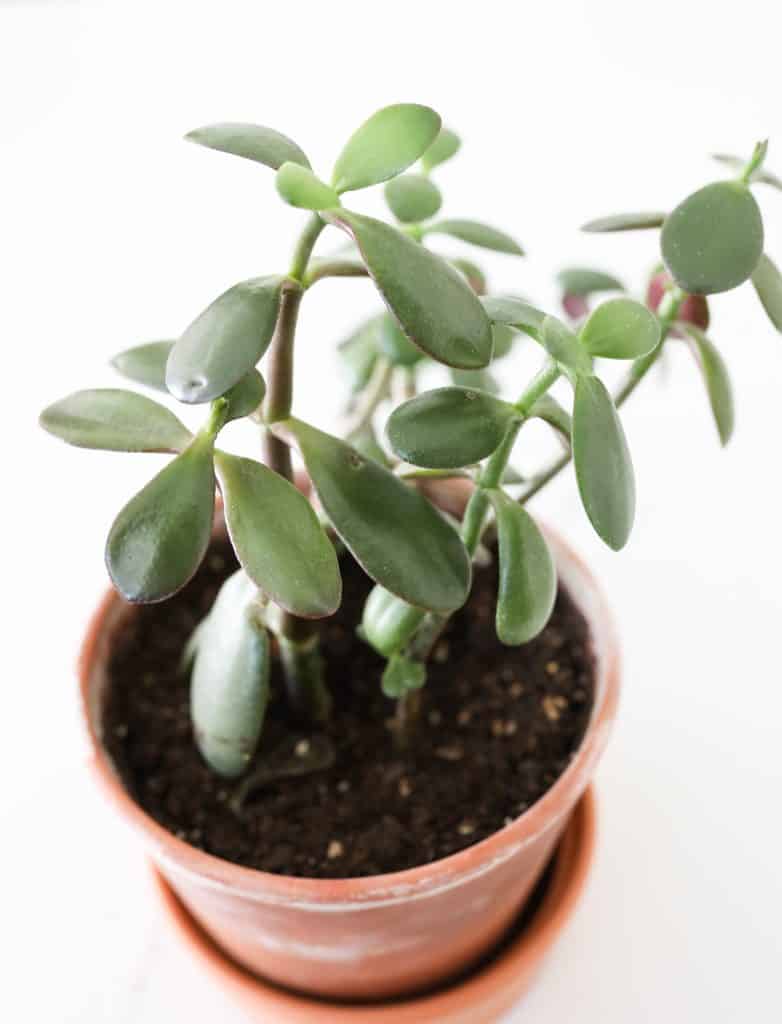
Pests and Diseases
The most common pests for jade plants are mealybugs, soft scale and spider mites. Because these are all such small pests, they may go unnoticed for quite some time and hide on the surface and underneath the leaves of the plant.
Once you have found these pests, you should isolate your plant from any other plants. You then will need to clean the leaves with rubbing alcohol several times before the pests will be entirely gone. If you are not able to totally eliminate these pests, you may just need to throw the plant away!
Powdery mildew is also a common problem for jade plants and is a fungal disease. It does not kill the plant, but will cause patches of a powdery or fuzzy substance on the leaves of your plant.
If you notice powdery mildew, the first thing you need to do is remove all the leaves that are infected. Then you need to use a fungicide to treat the rest of the plant. You can buy a commercial brand or use a homemade one. Use 1 tablespoon of baking soda with ½ teaspoon of liquid soap to a gallon of water. Spray your plant with this once a week for three to four weeks.
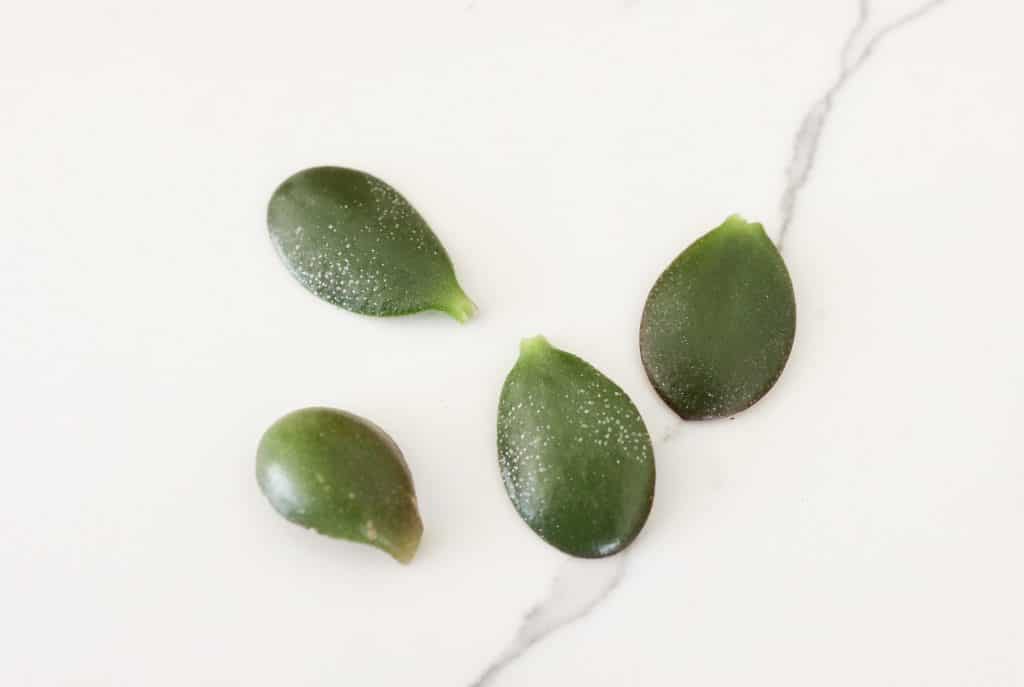
Pruning and Repotting
One reason to prune your jade plant is to get rid of old or unwanted stems and leaves. This will help keep your plant looking healthy. It can also remove any diseased or unhealthy foliage on your plant.
Another interesting thing about pruning a jade is that when you make a cut at a growing point called a node, two shoots will grow where there used to be one! Nodes are where the new growth originates.
Jades don’t have to be pruned, but you may want to do so to get rid of leggy stems, remove a broken branch, take new cuttings, reduce the bulk of the plant overall, promote compact growth, or to style your plant artistically.
You will probably want to repot a young jade plant every two to three years and give it fresh soil and put it in a bigger pot. If you have an older jade, you can do it once every four to five years. The best time to do this in the early spring, just before the growing season begins. After repotting, wait at least a week to water the plant.
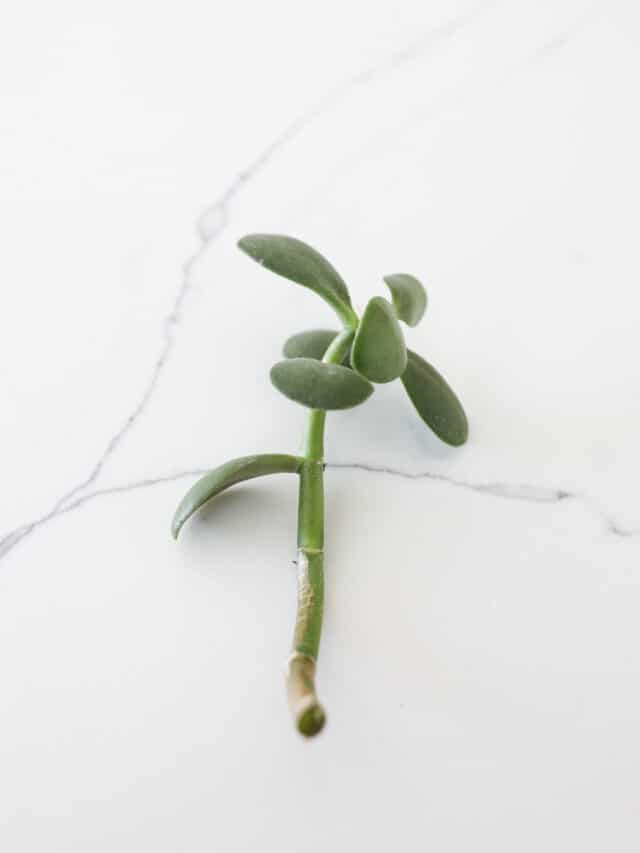
Propagation
If you want to get a few new plants from your one jade plant, you can propagate it! Propagation can be done either through stem cuttings or leaf cuttings. We have a full tutorial on how to propagate your jade plant to guide you through that process.
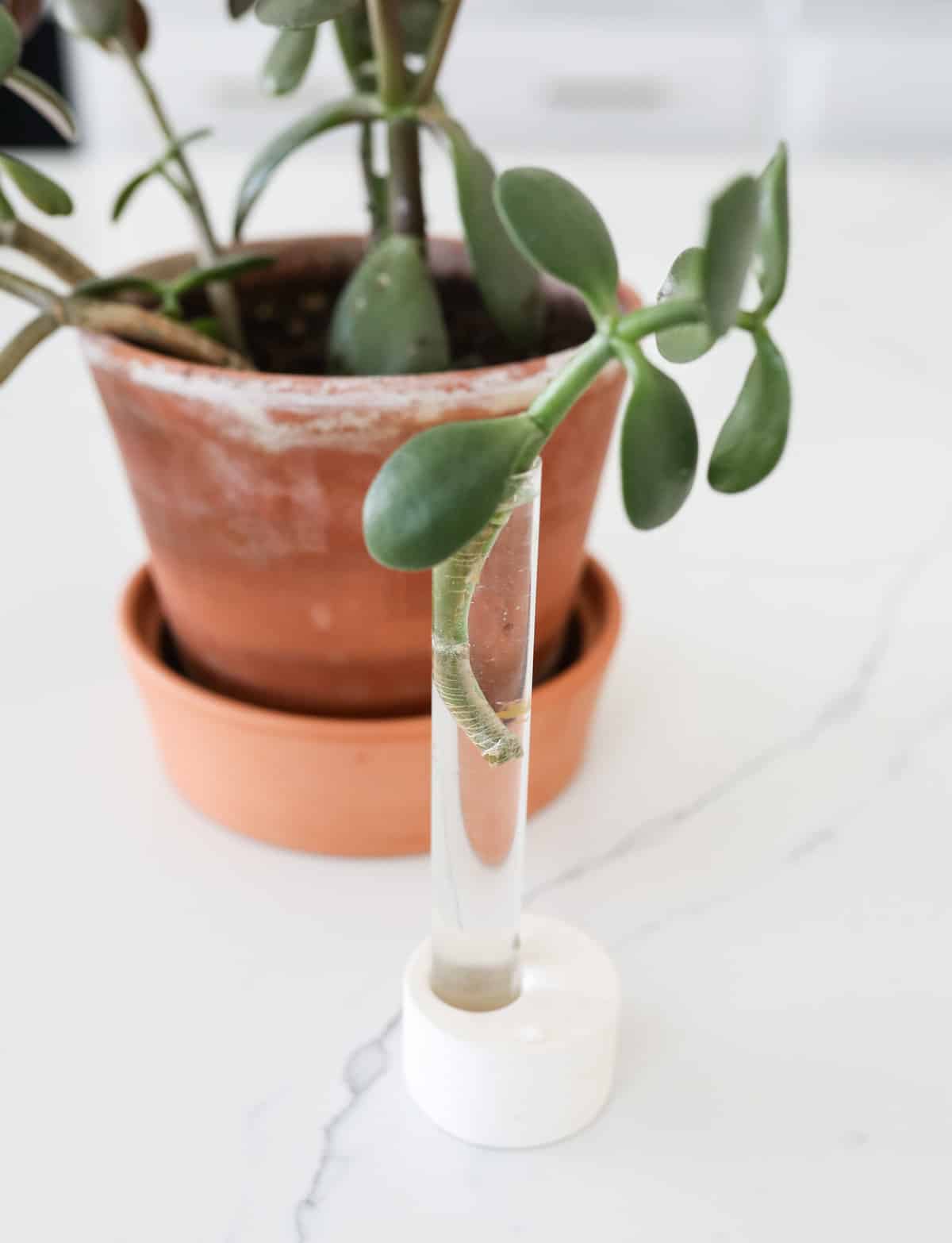
Common Problems
One of the problems people have with their indoor jade plant is that they don’t ever flower. This is most likely due to the age of the plant. Young plants flower very rarely. Jade plants flower when they are about five to eight years old. This is why many people have to wait so long to see their plant bloom.
Another problem can be loss of leaves. This can be a sign of inadequate lighting. Move your plant to a place with better lighting to see if this will solve the problem. If necessary, use a grow light to get enough light for your plant to thrive!
Sometimes you may notice the leaves yellowing.This can be due to overwatering. If you notice your plant is starting to rot, you need to stop watering and let the plant dry out. If this doesn’t work, you may need to start a new plant by propagation from leaves. You can do this by choosing a healthy leaf to propagate a new plant.
FAQs
Used coffee grounds work great for succulents like jade plants since they grow in slightly acidic soil. The grounds also contain two crucial nutrients – magnesium and potassium. However, you should use the grounds sparingly since they are also high in nitrogen.
Yes, you can use epsom salts for your jade plant. It is rich in magnesium and will provide your plant with added strength. Simply mix two tablespoons of epsom salts with one gallon of water. Use this to water your plant once a month and watch it thrive!
Since your jade plant is a succulent and holds water in its leaves, it only needs to be watered once every two to three weeks. It should never be left sitting in moist soil. You need to let the top one to two inches of the soil dry out before you water again.
Jade plants are one of the most attractive plants you can have in your home. They have such beautiful green foliage and also give such rich texture to your environment. With proper care you’ll have a happy healthy plant for years to come!
If you are so inclined, you should grab a couple different types of jades and give them a whirl! You might be pleasantly surprised at how much fun they are to grow, how pleasing they are to the eye, and also how many compliments you will get from your friends! As always, keep on growing!
I just read an article talking about how jade plants (or Crassula ovata if you know them by their botanical name) were trendy in the 1970s. That made me laugh since in the article I wrote previously about 20 Types of Jade Plants, I talked about the first time I laid eyes on a jade plant and it was in the 70s! How timely!
